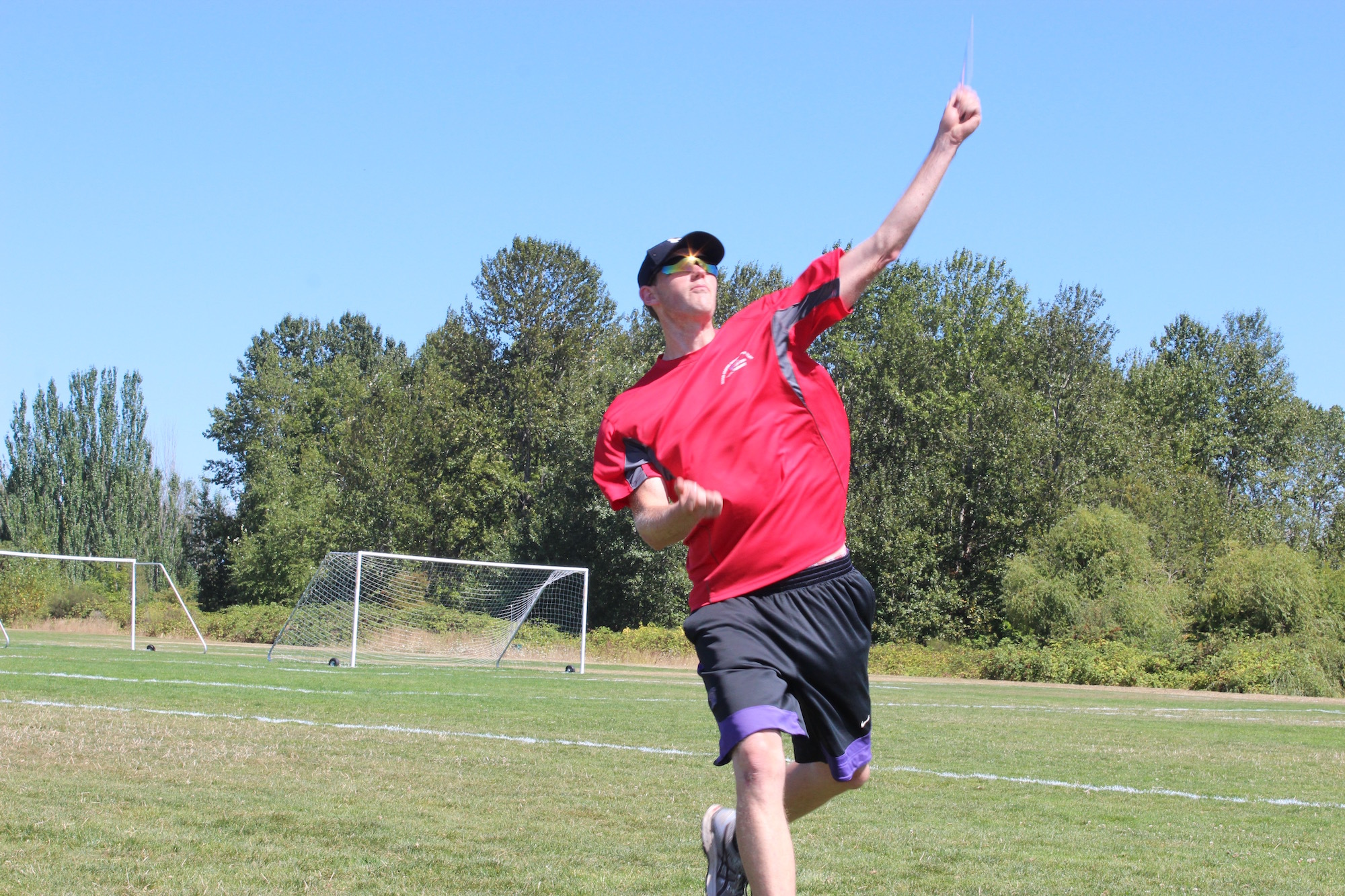A layperson could have been forgiven for being a little jumpy last week as four men in matching red T-shirts whizzed boomerangs in wide, returning circles in every which way at Magnuson Park. But those who know boomerangs are the picture of relaxation.
“If I’m feeling low, I can go out on a day like this and just carve arcs through the sky,” Will Gix says as he does just that, his lightweight boomerang looping wide over the dry field.
“Seriously, on a clear day it feels just like carving fresh powder,” adds Dan Bower, referring to the floating sensation downhill skiers cherish (Dan also assures that boomerangs are perfectly safe if handled properly).
Dan’s twin brother Richard compares it to another sport, baseball, and emphasizes not the joys of the boomerangs but the pain. “Each day of throwing is equivalent to pitching a complete game,” he says as he does indeed wind up like Félix Hernández and unleash his boomerang high into the air, and a reporter ducks for cover. “So a tournament is like throwing five complete games in seven days. It’s very, very grueling.”
Yes, he said tournament.
If you think some of the Olympic sports airing on cable right now are obscure, consider competitive boomerang throwing; even the steeplechase looks downright mainstream by comparison. However, while under the radar, the sport is well-established, with a worldwide following that earlier this summer brought 17 teams to Kiel, Germany, for the biannual World Boomerang Cup—a competition that dates back to 1981 when an American team challenged an Australian team to a match.
Teams of six compete in a wide range of events designed to measure different strengths. In one, team members throw 20 meters out and are measured on how little they have to move to catch it as it returns (accuracy); in another, competitors see how long they can keep a boomerang airborne (answer: a really long time). Throwers arrive at tournaments with dozens of boomerangs that each serve a specific purpose—one may be good with easterly winds, another all about distance.
Oddly enough, Australia has never been all that good at competitive boomeranging, but the United States has long been a powerhouse, with Seattle producing a disproportionate number of strong throwers. To wit: The Americans this year reclaimed the World Cup from the Japanese, with a team of five Seattleites and one guy from Cleveland.
Which gets us back to Magnuson Park, where on this hot but breezy day four members of the 2016 world-champion team have gathered for an impromptu demonstration of their skills. They even brought the cup along, which is named “Toby”—short for Uncle Tobys Oats, the Australian cereal company that sponsored the original World Boomerang Cup and whose brand name is still engraved on the trophy. It was Gix who had the honor of getting the trophy to Seattle from Germany; “This is our Stanley Cup!” he says he told the customs agents as he brought it through security.
“Seattle is the most talented city for boomerang,” says team member James Stickney, who doubles as president of the U.S. Boomerang Association. “Though, to be fair, the guy from Cleveland is one of our better throwers”—that would be Logan Broadbent. The sixth member of the team is Steve Kavanaugh, from the Seattle area.
Seattle’s prowess in boomeranging is most often traced back to a man named Michael Gel Girvin, who in the 1980s began teaching students at Evergreen State College to throw. It being Evergreen, students were soon able to earn credits for throwing, which most people would agree beat the hell out of writing a paper. The people Gel taught then taught others, who taught others. Pretty soon a niche was formed. The Bower brothers still remember the month a boomerang thrower came to their school and taught them the basics: November 1999. Now 30, the two have now won two World Boomerang Cups.
Eager to see it grow, Seattle’s boomerang throwers are evangelical about their sport and want others to learn the good word. The Bowers now teach Boy Scouts how to make their own boomerangs, which while not good for college credit does help them earn a woodworking merit badge. And they want people to know that not all boomerangs are created equal, which means that if you’ve tried throwing and failed miserably, it might not be you: “Ninety-five percent of boomerangs on the market are junk,” says Dan Bower. “If they practice with those, people are setting themselves up for having a bad time.”
They ask anyone interested in trying boomerang to just get a hold of them (usba.org/contact). They’d be happy to invite you out.
Just remember to duck.
dperson@seattleweekly.com
This story has been edited to remove reference to boomerangs as “weapons.” The comment was in jest, but played into a narrative of boomerangs being dangerous. Apologies to Seattle’s great throwers.








